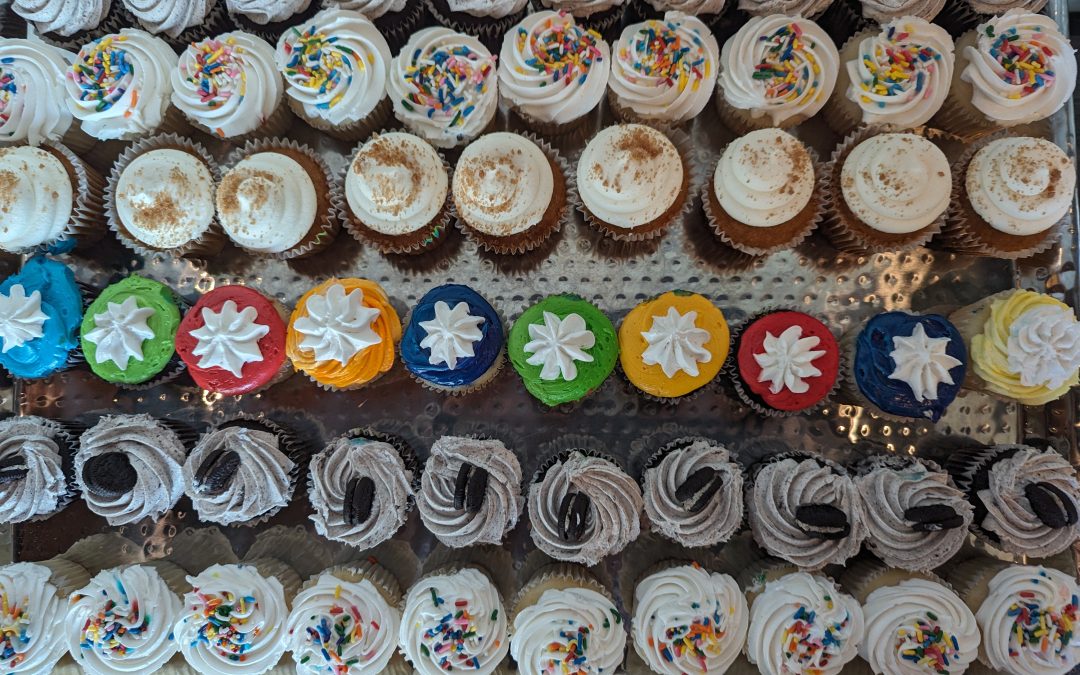
by dbward | Jul 29, 2024 | Uncategorized
“A couple of months in the laboratory can frequently save a couple of hours in the library.” — Frank Westheimer
The inverse of the humorous observation known as “Westheimer’s Discovery” is also true: a couple months in the library can easily save a few hours in the lab.
The challenge, of course, is figuring out which situation we’re in. When we’re looking for information, is it more likely found in a book (or these days, a website) or in a physical test tube?
Perhaps the solution to this dilemma is to spend a few hours in each place before we commit to spending a few months in either.

by dbward | Jul 22, 2024 | Uncategorized
I recently read a three non-fiction business books that I would generously characterize as “crummy.” They weren’t awful, and I did finish them all, but none were particularly good. The writing styles were flat, they lacked a real sense of humor (or wonder or passion) and the insights were a notch or two below what I’d call inspiring or insightful.
You may wonder why I bothered to finish such tepid books (and I hope you understand why I’m not mentioning their titles). Here’s the reason: while the book’s contents were mediocre at best, they nevertheless sparked a reaction in me. They got me thinking about how I would address the subject, if I was the author. I found myself spurred on to imagine a better version, one with humor and heart and surprises.
The truth is, despite the meh reaction, I couldn’t put them down.
And to be clear, I wasn’t hate-reading them, picking apart each paragraph or chapter, piling up angry critiques or assembling my arguments against the author’s message (that’s a topic for a whole other blog post!). I also wasn’t finishing them out of a sense of obligation to finish what I started. The list of books I’ve started but never finished is vast! Instead, I finished reading these books because I was genuinely appreciating what they were doing for me. They sparked ideas, and isn’t that the reason we read in the first place?
Author Richard Rohr writes “the best criticism of the bad is the practice of the better.” As I read these books, I found myself spurred on to “practice the better.” I read them all with a pen in hand, sketching outlines and excerpts of books I may write someday, doubling down on my commitment as a writer to bring humor and humanity to the things I write, to offer surprises instead of clichés.
One of the practical results of those books was… reenergizing this blog. It’s a handy way to stretch myself as a writer, to play with words and hopefully produce something worth sharing. Watch this space for the experiment to continue…
Image from Wikimedia Commons by Knoell8504

by dbward | Jul 18, 2024 | Uncategorized |
Today’s blog post is by guest blogger Tasia Gladkova
Working in design and 3D printing means a lot of prototyping. At the Advanced Manufacturing Lab at MITRE, I often work on iterating designs and bringing people’s visions into 3D space. When browsing the ITK website, I wanted to see if there were any guidelines to help with the prototyping process—not just in physical design, but also in software and experiences. The initial version of the tool didn’t give me the detail I wanted, so my co-lab manager, Lilia Chan, and I decided to transform our daily thought processes into a new ITK Prototyping tool.
A cornerstone of many designers’ processes is the Double Diamond of Design (see picture). Before starting on solutions, we need to understand the problem. To start making a prototype, we wanted to make sure the user is going in having done the necessary legwork. So starting with the assumption that the user has identified their problem scope that they are prototyping for (perhaps by doing other ITK tools such as Community Map, Stakeholder Identification, Personas, Painstorming, Problem Framing, and Problem Statement Definition). We decided that the framing for the prototyping tool would start with a “How might we” statement that brings the user to the “Develop” portion of the double diamond where our new prototyping tool lives.
We embarked on a meta journey of documenting our design process and, in turn, designing the experience of following a design process. We started by walking through some our past prototyping efforts and identifying questions we asked and the flow of our process. We landed on some key phases:
- List Requirements (discovered through the Define and Discover phases of the double diamond)
- Vision Board (document inspiration and existing solutions that don’t quite work for your application)
- Sketch Mind Map (create small scale drawing and connected ideas sprouting from the identified requirements)
- Combine Sketches (start consolidating and combining ideas from your many sketches)
- Choose what to prototype (identify features of your sketched product that will likely need the most iteration or pose the most risk)
- Create paper/cardboard prototype (although we often use 3D printers in our work, creating something out of cardboard or paper can save time by showing what may not work at higher fidelity)
- Collect feedback and make changes (you can use your prototypes to test initial reactions of stakeholders and users and then go back in the process to iterate on suggested changes)
Moving forward we are hoping groups will test out our Prototyping process, especially on products that aren’t necessarily physical objects to test the breadth of the abilities of the tool. We feel confident that this approach works for the types of asks we see as mechanical engineers, but we would love this to help larger communities. If you try out the tool, let us know how it went and how you would improve on it!
by dbward | Jul 15, 2024 | Uncategorized |
The other day, I was walking down the hallway at work and bumped into a relatively senior person in my Division. She asked if I’d moved into a new office space in this area.
I said “Yes, it’s just down that hallway.”
Her response – a big grin and “Show me!”
That moment, those two words, demonstrated genuine interest in me and my situation. It implied she might stop by sometime, or at the very least wanted to make sure I was well situated. She could have just said “Cool cool cool, glad to hear it, see ya later…” and kept on moving. I wouldn’t have thought anything of it, and probably would have simply been glad she said hello and asked a question.
Instead, she did more than the minimum. She spent two minutes and walked down the hall with me, to see my new office. That cost her almost nothing but had a big impact on me – I’m still thinking about it (and blogging about it!) weeks later.
Moments of connection like that go a long way towards building up a team.
by dbward | Jul 8, 2024 | Uncategorized
Following up on a previous blog post, here’s another fun quote from Fredric Laloux’s intriguing book Reinventing Organizations:
“Chaos will ensue, which is what you hope for.”
To put that line in context, he’s writing about the creative chaos that is generally necessary when we transition away from a top-down, command-and-control style of organizational management and towards a style that relies more on self-management, shared leadership, autonomy, and trust.
Yup, a shift like that means chaos will ensue for a while. If it doesn’t, then we haven’t really let go of the outdated approach to power and control. We haven’t make the shift.
The key is to see the creative energy that comes with the chaos. To see that what feels at first like chaos is actually a healthy transition to a more mature mode of collaboration.

by dbward | Jul 1, 2024 | Uncategorized |
I came across the phrase “a practice of comforting” in Frederic Laloux’s intriguing book Reinventing Organizations. It was in the context of examining the character of an organization, its short-term health and long-term quality, its ability to recover from setbacks and to heal from injury. The suggestion was clearly that organizations with an established practice of comforting are healthier in the short and long term.
What a remarkable concept – an practice of comforting people as something we do in our organizations. Imagine that! That sounds reasonable enough in a healthcare scenario, but in a tech firm or manufacturing company? Wow.
As I read, I found myself wondering about the range of comfort people in an organization might need, and in what sorts of situations? What sort of comfort might people in an organization expect or receive? It occurred to me that ITK’s tradition of eating Failure Cake together is one such “practice of comfort.” We often describe these cakes as something that take the sting out of failure, that destigmatize shortcomings and brings people together. Failure cake is a practice that we find to be deeply meaningful, helpful, and yes, comforting.
What about you? What could a practice of comforting look like in the organization you’re a part of?




